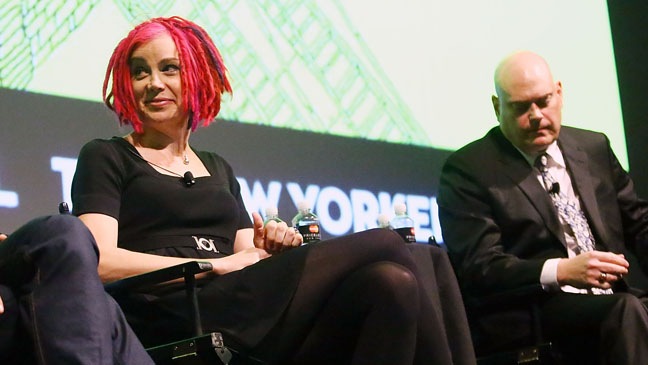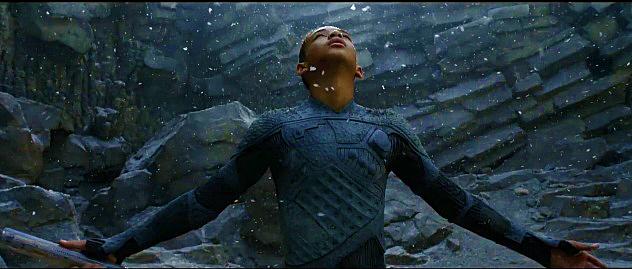Last week the LA premier of Kathryn Bigelow’s film about the hunt for Osama Bin Laden was picketed by hood wearing activists protesting its depiction of torture. In Washington, outside the Whitehouse, Codepink, the feminist peace group, were protesting the announcement that John Brennan, a former CIA analyst said to have supported the Bush torture and rendition programs had been nominated to be the Director of Central Intelligence.
Four years after George Bush left the Whitehouse and just as President Obama is about to be inaugurated for his second term. The issue of torture is still a raw wound in the American psyche.
Bigelow’s film, Zero Dark Thirty, is an Oscars contender for best film but it has been causing controversy even before production began. It begins with graphic torture scenes and its critics say it leaves the impression that information extracted from prisoners under torture was critical in locating the al Qaida leader. Three US senators, Diane Feinstein chair of Senate Select Committee on Intelligence, Carl Lewin chair of the Armed Services committee and former Republican presidential candidate John McCain, found this implication so disturbing they have sent a letter of protest to Sony, the picture’s producers. Naomi Kline went so far as to call Bigelow a Leni Riefenstahl apologist for torture.
The Senators wrote that their staff had reviewed 6 million pages of intelligence material in the course of a recent review of the CIA’s detention and interrogation program and it “is factually inaccurate” for the film to “imply that the CIA’s coercive interrogation techniques were effective in eliciting important information related to a courier for Usama Bin Laden”.
The senators are fulsome in their condemnation of torture:
The use of torture in the fight against terrorism did severe damage to America’s values and standing that cannot be justified or expunged. It remains a stain on our national conscience. We cannot afford to go back to these dark times, and with the release of Zero Dark Thirty, the filmmakers and your production studio are perpetuating the myth that torture is effective.
The senator’s language about “going back to these dark times” seems to echo president Obama’s justification for not prosecuting Bush era crimes by stating that he believes the nation needs “to look forward as opposed to looking backwards”.
It is striking that in spite of her condemnation of torture Senator Feinstein took quite a different view of Brennan’s nomination, releasing a statement saying:
Clearly, Mr. Brennan has the qualifications and expertise to be the next CIA Director. He has longstanding knowledge of the operations of this critical agency and also the strength to see that it follows the law. I believe he will be a strong and positive director.
When it was rumored that Obama would nominate Brennan for the CIA job four years ago, at the start of his first term, Brennan was forced to withdraw from consideration because of his apparent support of Bush era torture policies. As a number of commentators have pointed out (here and here ) that four years on this does not seem to be an insurmountable hurdle. Polls suggest that more Americans now support torture as a valid policy in the fight against terrorism than they did four years ago.
It is tempting to argue that that is because the American public have become inoculated to the horrors of torture through its recurrent use in TV series like 24 or movies like Bigelow’s. That argument is an easy out. The more serious reason is that Obama has failed to hold anyone to account for the Bush torture and rendition policies. Even cases of brutal detainee deaths have been dismissed. It is not just left wing activists who are calling these Bush era policies “war crimes.” In 2008 Major General Antonio Taguba who headed the inquiry into Abu Ghraib wrote:
“After years of disclosures by government investigations, media accounts and reports from human rights organizations, there is no longer any doubt as to whether the current administration has committed war crimes…The only question that remains to be answered is whether those who ordered the use of torture will be held to account.”
Both Bigelow’s film and Brennan’s nomination have become lightening rods for controversy and protest because as Senator Feinstein and her colleagues wrote in their letter of protest:
The use of torture in the fight against terrorism did severe damage to America’s values and standing that cannot be justified or expunged. It remains a stain on our national conscience.
This stain will not disappear. Perhaps Obama is right that no good purpose will be served by prosecutions but perhaps he should learn from other countries who have initiated strong process of national reconciliation and accountability. In a 2009 conference presentation Paul van Zyl the former executive secretary of South Africa’s Truth and Reconciliation Commission suggested that America needed a similar process in the post-Bush era. It was briefly reported but is not an idea that gained traction.
There have been a series of reports and investigations such as the investigation into the CIA’s practices that Feinstein’s committee has overseen but the report has not been made public. Reports of the details of the Bush torture program have leaked out gradually through the hard work of journalists and activists rather than in a cohesive transparent process that is designed to come to terms with such a fundamental breach of national values.
Just as the Australian federal government has finally decided that only a full Royal Commission can address the national horror around child abuse only a national US commission of inquiry can hope to lay to rest the ongoing American and international horror around state sponsored torture.


